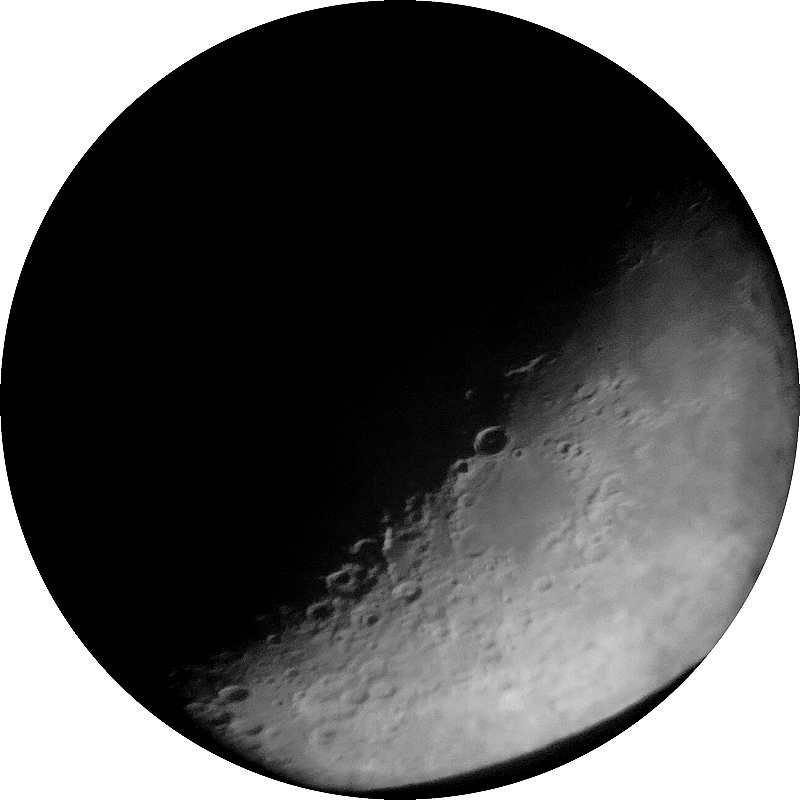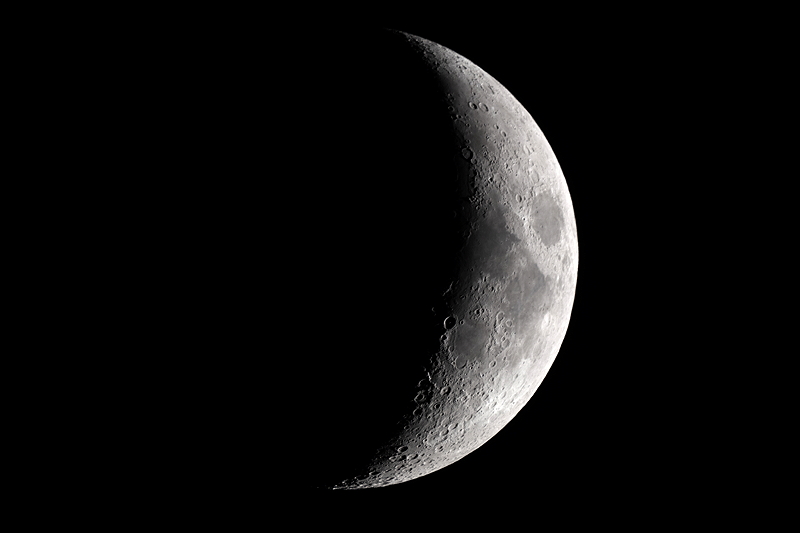1961 3" Newtonian observing & iPhone astrophotography,
12" LX600 ISS
Posted: 19 March 2021
Wednesday, 17 March 2021, was clear until late afternoon when clouds began arriving. The sky cleared on Thursday, 18 March.
|
Open: Thursday, 18 March 2021, 1814 MST Temperature: 84°F |
Session: 1610 Conditions: Clear |
Equipment:
12" f/8 LX600 w/StarLock
2" 24mm UWA eyepiece
3" f/10 Newtonian Telescope
0.965" 1/2" eyepiece
0.965" 3/4" eyepiece
0.965" 1/4" eyepiece
Camera:
iPhone 11 Pro Max
D850 DSLR
SYNCed the observatory clock to WWV time signals.
1820 MST: LX600 ON, StarLock OFF, High Precision OFF.
Viewed the Moon using the 12" telescope, 102X.
Updated the TLE for this night's excellent pass of the International Space Station (ISS).
I then set up my Edmund Scientific 3" f/10 Newtonian Reflector Telescope on the observatory patio. This was my first telescope, received as a Christmas present from my mother in 1961.

Viewed the Moon with the 3" Newtonian using the 0.965" 1/2" eyepiece (60X). Nice view using this old telescope (whose mirrors need to be realuminized).
1833 MST: dome OFF (onto PZT).
Checked the alignment of the two finderscopes on the 12" telescope for the ISS pass. They were OK.
1837 MST: sunset.
1838 MST: I returned to the 3" telescope. Took this handheld iPhone 11 Pro Max photo of the Moon, afocal 60X, using the iOS app NightCap Camera (ISO 250, 1/60sec, 1X lens).

I then viewed the Moon using the 0.965" 3/4" eyepiece (40X). That was really a nice view. Took this handheld iPhone photo, afocal 40X, using NightCap Camera (ISO 32, 1/90sec, 1X lens).

I switched to the 0.965" 1/4" eyepiece (120X) and viewed the Moon. This is a handheld iPhone photo, afocal 120X, using NightCap Camera (ISO 640, 1/60sec, 1X lens).

Next, I mounted the D850 DSLR camera at prime focus of the 12" telescope, focused on the Moon, and locked the 12" primary mirror. Took this photo (1/320sec, ISO 800).

I was now ready for the ISS pass. The space station would pass directly overhead, which is why I had moved the dome off onto the POD Zenith Table (PZT). I would miss the last 3rd of the pass as it would be hidden by the dome.
1907 MST: I began doing a video recording (2160p, 30 fps, 1/2000sec, ISO 1600) of the ISS. The AutoStar tracking was pretty good, with only minor adjustments needed as I manually assisted the tracking in a finderscope. With the ISS near the Zenith I captured several good frames showing the structure of the space station, as seen here.

Click or tap on image for larger version
After the ISS pass was over I removed the camera and viewed M42 (Orion Nebula), 102X.
I then returned to the 3" telescope. I used the star Sirius to make a slight adjustment of the primary mirror collimation. I viewed the Orion Nebula, 40X. The Trapezium star cluster was nicely visible, but the nebulosity was hurt by the nearby bright Moon.
It was fun doing some observations with my first telescope and doing iPhone astrophotography with it. It brought back memories of using the telescope back in the 1960s, and even taking photographs with it using roll film cameras.
1938 MST: LX600 OFF.
1942 MST: dome ON.
|
Close: Thursday, 18 March 2021, 1949 MST Temperature: 61°F |
Session Length: 1h 35m Conditions: Clear |
Comments are welcome using Email. Twitter users can use the button below to tweet this report to their followers. Thanks.
Cassiopeia Observatory Home Page
Copyright ©2021 Michael L. Weasner / mweasner@me.com
URL = http://www.weasner.com/co/Reports/2021/03/19/index.html
